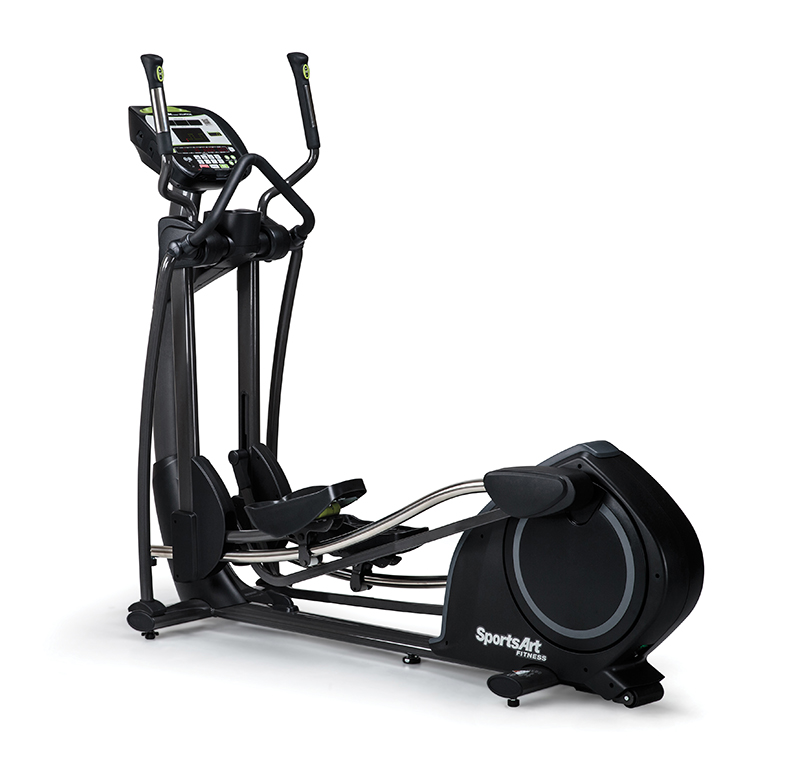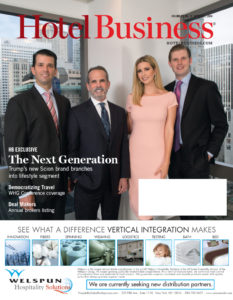WOODINVILLE, WA—Earning rewards points while participating in green initiative programs could be as simple as hopping on a treadmill in a hotel’s fitness center to burn calories before a day filled with meetings.
“Incentives are becoming more common already,” said Eric Ricaurte, founder and CEO at Greenview, a consulting firm. “For example, priority parking spots for electric vehicles, or Starwood’s Make a Green Choice Program incentivizing guests for opting out of room cleaning, which I’ve seen in several other hotels since Starwood’s start. So this would be another example. Certainly, it will motivate some guests to exercise, while others it will not, and for various reasons. Sustainability has a wide range of psychographic segmentation among guests.”
Previously only targeting health clubs, SportsArt is now pitching its Eco-Powr product line to the U.S. hospitality industry—with the hope of being able to tie its eco-friendly fitness equipment into the overall stay experience for hotel guests.
“We position ourselves and our products not as direct ROI,” said Dan O’Leary, director of product management at SportsArt. “The company, or the property, is not investing in Eco-Powr to get money back. They’re investing in a piece of fitness equipment as an amenity to the hotel. The icing on the cake is that our products will put that power back into the grid as real electricity.”
Traditionally, fitness machines generate their own energy. A standard bike produces its own DC power to kick on its console and other functions. A SportsArt Eco-Powr machine converts DC power to AC power, and then sends excess electricity back into the power grid.
“The energy from exercise equipment is arguably negligible in comparison to a hotel’s electricity load at present. So, this is probably not a large efficiency investment strategy,” Ricaurte said. “However, technology and transactions relating to generating, storing and selling energy will become more diverse and common as well, so this is one way to begin exploring this shift. It’s also an example of starting to engage the guest in more creative ways that create a mutual benefit or shared value. If a segment of guests wants more motivation to exercise while traveling, this may help. Finally, it’s an example for hotels to consider how the ever-evolving aspects of equipment, FF&E and operations extends to what is considered ‘green.’ Lighting went from incandescent to CFL to LED. The pace of change will quicken, but hotels will be able to consider new opportunities every year and with every major renovation.”
SportsArt isn’t claiming its machines can turn properties into eco-friendly environments alone. It wants to instead market its products to hotels seeking sustainable solutions.
“It’s a small sum of an aggregate total, so we want to be a part of that machine, that mechanism, which can make the entire property a sustainable business,” O’Leary said.
SportsArt machines are comparable to others in the market if you remove the Eco-Powr part from the equation. Precor, one of its competitors, has cardio equipment in certain Hyatt and Marriott properties across the U.S.
“When you spec out the standard components of a piece of exercise equipment, our stuff matches that, and it is priced the same,” he said. The key differentiator between brands is the additional “green” component to SportsArt’s Eco-Powr products. The line isn’t new in the sense of biomechanics and user engagement. (The company also based its machines on standard equipment first.)
“It looks the same as our competitor’s product,” O’Leary said. “This gives us a differentiator that allows them to take a second look at what we’re doing and, on top of that, there’s a sustainability component, which we deeply believe in.”
Other companies have tested out eco-friendly machines in the past. What makes SportsArt different is it doesn’t partner with a third party for the “green” component of its product line, according to O’Leary. Designing machines this way allows SportsArt to capture a user’s kinetic energy from the beginning of a workout.
“We manufacture and make our own products that work together at the base level, so right when the person starts pedaling, we start collecting that energy and because we don’t lose as much through transfer, we capture about 75% of the user’s energy,” he said.
SportsArt has some installations in hotels in Europe. The Radisson Red in Brussels features SportsArt Eco-Powr equipment in its facilities. Christel Cabanier, curator at Radisson Red, said guests “really like the eco-friendly fitness material.” The property has five pieces of equipment in the facility, but only three are from the Eco-Powr line.
“Typically, properties and hotels that already embrace sustainability initiatives understand what it is we’re doing,” O’Leary said. “They understand how we fit into their ecosystem.”
SportsArt is currently working with a couple of companies in the United States; however, being in contract negotiations with them, SportsArt cannot comment on which ones.
“U.S. hotels will adopt it, too, if it’s working in Europe,” Ricaurte said. “It may be related to regulatory or contractual issues that are different in the U.S. in terms of being able to sell electricity back to the utility provider, or how to account for this with separate owner and management company. U.S. Hotels have undergone a lot of renovation of fitness centers, as fitness is clearly an important component for the guest. The equipment investment has to be right, as do the incentive mechanisms for the guest.”
Providing guests with sustainability programs they can participate in may not be a waste. Published in The Scholarly Commons, a 2015 survey of 120,000 hotel customers found guests are more than willing to partake in programs designed to promote eco-friendly initiatives; however, this mentality only goes so far—price and convenience still reign.
“The idea is that people can take a continued and active role in what their sustainable contribution is, and it creates an emotional connection to what you’re doing,” O’Leary said.
Originally, the interest only lasted so long. Users found the idea “cool,” but as time went on, people forgot about the sustainability component of the equipment. To adapt and overcome, SportsArt developed an app where guests are able to track workout progress and share information on social media if they feel the need to boast their successes.
“We created a system called SA Well+ that will capture the data, capture that watt total and then we can do something with analytics with that data,” he said.
For example, SportsArt can demonstrate how converted kilowatts save energy by displaying analogous relationships. How many televisions did a guest power? How many gallons of gas were saved by limiting equipment to Eco-Powr products?
Additionally, SportsArt has been pitching the “millennial mindset” to properties interested in its Eco-Powr products. According to the company’s research, millennials have been known to have more of an “emotional connection to sustainability.”
“The power base of where money is switching is from the baby boomer generation more to the millennial generation,” O’Leary said. “A lot of companies are making changes in their business model to attract that demographic.”
At the end of the day, “It looks good for businesses to be sustainable,” he concluded. HB


